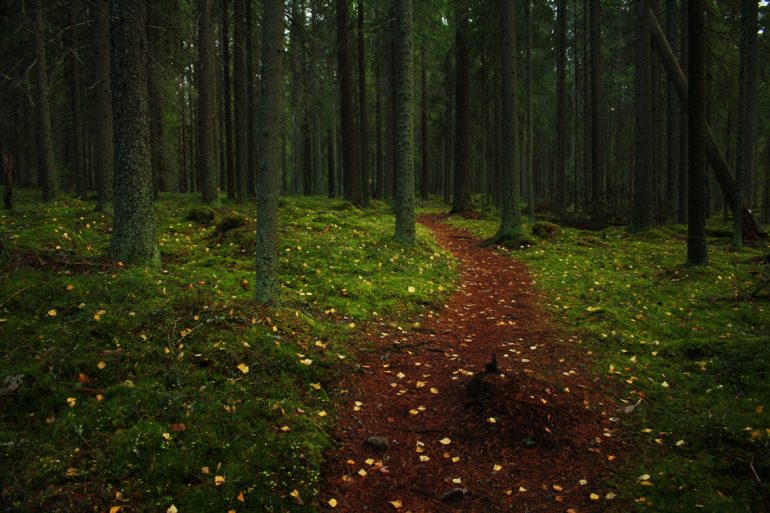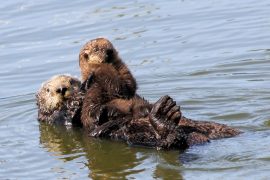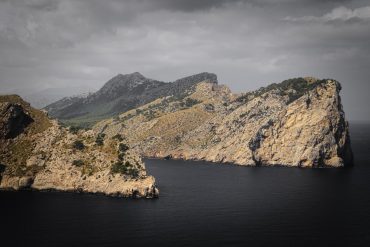Trail blaze, or follow the road?
My best friend grew up on a few acres in east Texas, in a town of a 1,000 people. Timpson is just one small strip of a Whataburger and Tex-Mex restaurant, stubby dry shrubs and plentiful honeysuckle. After our junior year of college I drove down from Chicago with her to visit her parents. They were separated but living on the same country road, her mom in their old ranch house taking care of the horses and her dad in a self-assembled cattle shed, his community a garden and tractor. One afternoon we sped down dirt roads in Kay’s bug-splattered Altima to visit dad. He took us out to the tractor, lifted us girls on the scooped front bed and paraded us slowly, noisily around the edge of his property. Growing up in the north suburbs of Minneapolis wasn’t exactly metropolis; still I was impressed by the pure expanse of land on which he could do whatever he wanted. Beyond the food growing right from the ground (!) I was most excited by what lay on the edge of the property. I told Kay how much I wanted to explore the dry and tangled Gulf-coast brush in the shadowy outlying forest rather than continue down the carefully manicured rows of grass and garden. She looked at me wide-eyed. “That wild over there? That doesn’t look fun to me. To me, that’s all work.”
Stuck in the Suburbs
Growing up I wanted desperately to plunge into this “wild” that I knew so little about. I would take solo bike rides around the quiet baby boomer neighborhoods, zipping in and out of mowed and fertilized parks. I would delight and indulge in every newly discovered trail that led inevitably into an old crumbling boat dock on a pond or a burnt-out campfire filled with empty cans. I read the Dear America books: my favorite was Across the Wide and Lonesome Prairie, about the Oregon Trail and the cross-country wagon caravans. I pined after mountains. I got to visit the Rockies every year when I visited my grandparent’s home outside of Denver, but I would throw full-on tantrums when my family reserved only enough time to saunter around the foothills rather than trek to the distant peaks. I craved to feel a world outside of society where I could feel free from restrictions and be self-reliant. I wanted to portage, trek, chop through brush and hopefully come out on the other side with very minor bug bites and a major sense of accomplishment.
Sadly, much of my wanderlust is birthed out of a lack of experience. What more experienced farmers, climbers, hikers and campers understand to be difficult, challenging, or frustrating I see naively as a clean, fun adventure. I’ve grown up in such controlled environments that I see the off-road as a servant to the road, the lost and unpredictable places as accessories to the found, the front lawn petals to the street’s stem. I often wonder if I understand wilderness to be an essential part of human health or if I think wilderness adventure is just something I need to get out of my system, something to add to the bucket list next to “Get a tattoo.”
I do not think I’m alone in this naïve wanderlust. I see it not only in my play side but in my work ethic. I’m a part of a generation of young adults who are more excited about the adventure of start-ups than the tried-and-true existing models of business. We want to carve our own way and be our own bosses because we see so many dissatisfied suits and blame them for not having the energy to resuscitate stagnant corporate structures. We are so committed to our big, new ideas that an ordinary job that “conforms” to anything is beneath us somehow. We believe that it is more original and true to our values to rent out our parents’ basements while we pay off student loans than to take the risk of committing to something that doesn’t value how special and creative we are.
What is it about a path that is already carved for me that makes me feel like a magnet flipped on its back? The path is safer, more consistent and usually leads to more interesting destinations than a wander in the brush. I can get from New York City to San Francisco much faster on roads built by wise engineers than I can trying to walk in a straight line, through bog and mountain and forest. Still I like the idea of setting off into the wild, attempting to thrive on my own chancy exegesis of a compass and map rather than the boring and predictable black, white and yellow pavement lines. Unfortunately, what happens if everyone grabs a hatchet and begins paving a new way is that no one gets very far in any direction and the forest gets whittled into a parking lot.
“Never Stop Exploring”
When we constantly want to chop down things we might also risk abusing this well-meaning North Face slogan. My parents have trotted around the same two-mile lake nearly every day for the last fifteen years. Arguably they are no longer “exploring.” Yet they have witnessed this water in nearly every state imaginable: blue or grey sky, swallowed by snow or dreary with the haze of humidity. They sometimes call me to give me the updates on the new families of beavers that have moved in: they know every inch of the walk so well they notice the smallest changes and delight in them. This is true meditation, honest experience of the wild. I wonder how often our drive-by snapshots of Yosemite are equally as understanding, or if more often we look for the “epic” wild just to check it off the national park bucket list.
It is a privilege to choose one’s path, either in following a successful path or boldly carving out a new one. Certainly some feel stranded by life in the wilderness; others like myself often feel choked out or confined by concrete. My family has representatives on both sides: half is farmer, the other half is urbanite. Historically I have been stuck in the middle of these camps, avoiding smart phones or any real commitment to technology, and the paved-path life just in case my opportunity to disappear appeared. In many ways, though, I have chosen a paved path. I chose to follow a regulated ordination process, to live in urban and suburban areas where many people live and people mow their little lawns on the side of the paved paths. I hate that sometimes. I’m coming to understand, though, that following paths already carved for us is a courageous task in itself. It is courageous because there is less glory in it. Following paths means they will not be named after us. We are silently affirming the work of those who have come before us, moving destinations forward and contributing to a greater cause beyond our own desire for adventure. We can be thankful because the path gives the less adventurously-inclined people more opportunity to wander in wildness. And, because few can afford the price of constantly moving and exploring, we can take steps a little slower, round each familiar bend every day trusting that there is beauty and adventure in the familiar as well as the new, as long as it is approached with intention and attention.





